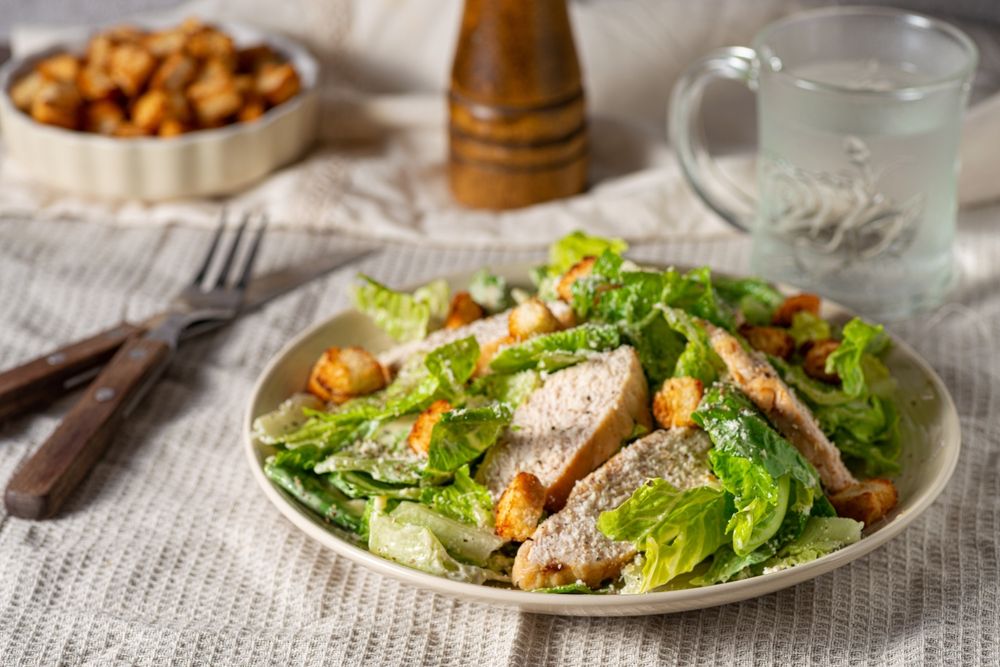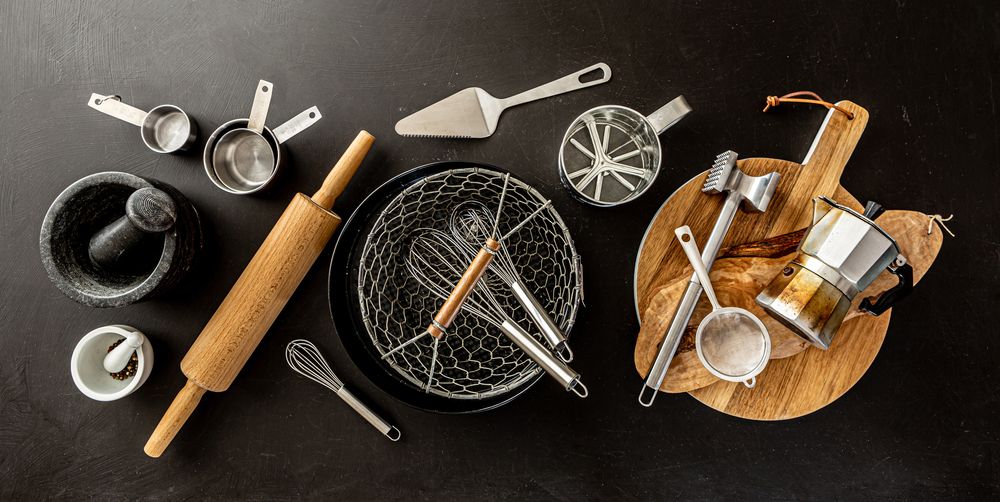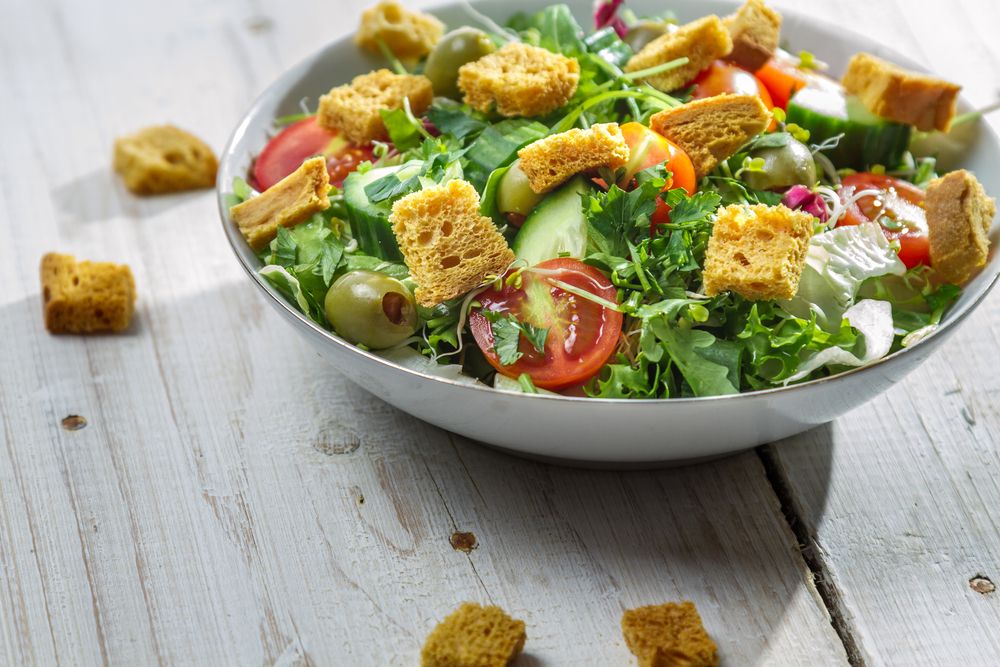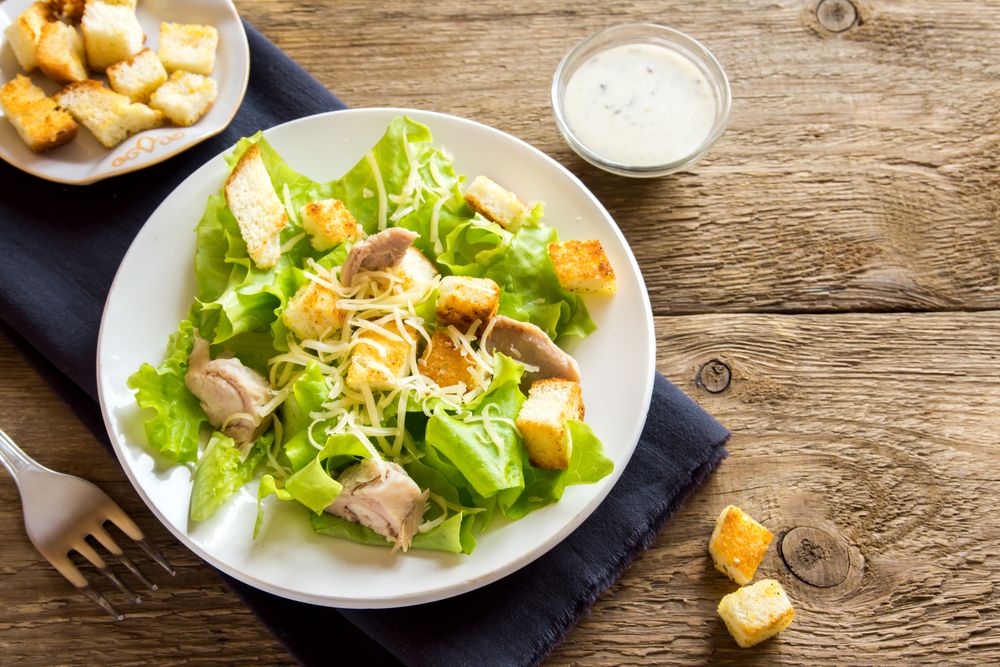
Few salads are as timeless and universally adored as the Caesar salad. It's rare for a salad to maintain popularity for an entire century, but this creamy combination of lettuce, cheese, and croutons celebrated its 100th anniversary just this past summer.
Originally crafted in Tijuana, Mexico, the Caesar salad is, in essence, "an Italian salad," says culinary historian Jeffrey Pilcher. "Caesar Cardini, the salad's creator, was an Italian immigrant," Pilcher shared in a recent interview with NPR. "Many Italian immigrants settled in Mexico and opened restaurants, contributing to the salad's unique origins."
Tijuana in 1924 was a popular hotspot, known for its bullfights, nightclubs, and the availability of alcohol during the Prohibition era. That summer, California tourists flocked south of the border to celebrate the Fourth of July. Faced with an unexpected rush at his restaurant, Caesar's Place, Caesar Cardini famously improvised by tossing together the ingredients he had on hand, making a memorable show of it in the dining room.
The rest, as they say, is history. To honor the salad’s invention, the city of Tijuana recently held a food and wine festival and erected a statue of Cardini.
Fortunately, the Caesar salad is now so widespread that you don’t have to travel far to find a great version. It appears on the menus of nearly every type of restaurant and is readily available in grocery stores as salad kits. For example, Fresh Express offers as many as 11 different Caesar salad varieties.
This widespread popularity is due to the Caesar salad’s refreshingly simple foundation. At its core, a Caesar salad consists of romaine lettuce, croutons, and Caesar dressing—typically made with aromatics, Worcestershire sauce, lemon, and Parmesan cheese.
To help you make the best restaurant-quality Caesar salad at home, we consulted two professional chefs: Ryan Delesandro of Chops Lobster Bar, one of Atlanta's top traditional steakhouses, and Brian O'Rourke, executive chef at the upscale Ray's on the River in Sandy Springs, Ga. Here’s their expert advice:
Gather your tools

Set up your workspace and collect the kitchen tools you need to get going. By taking stock of what tools you need, you save time and frustration tracking everything down as you're trying to work. You'll need these items in this order:
Cheese grater
Liquid measuring cups
Measuring spoons
Sharp chef's knife
Cutting board
Whisk
Salad spinner
Large salad bowl
Salad tongs

Pre-assembling your portioned-out ingredients—otherwise known as mise-en-place—is often considered one of the most critical steps you'll take to set yourself up for success in the kitchen. However, when making Caesar salad from scratch, you can save the step as the order of the majority of the ingredients don't matter and are going in the same bowl.
What you'll need:
1 whole garlic, finely chopped
1 anchovy fillet
1 ¼ tsp Dijon mustard
1 ¼ tsp Worcestershire sauce
1 ½ tbsp lemon juice, freshly squeezed
1 ½ tbsp ice cold water
¼ tsp hot sauce
1 tsp red wine vinegar
2 tbsp beaten whole egg
¼ tsp black pepper
½ tsp salt
1 ¼ cup olive oil
2 tbsp Grana Padano or Parmigiano Reggiano cheese, freshly grated and more for finishing
Three heads of Romaine hearts
Make your croutons (optional)
"Store-bought croutons are fine," says Delesandro, "but they're really easy to make yourself!" If you have a day-old baguette lying around, why not try making traditional croutons at home? "Simply dice the bread into cubes, toss with a little olive oil, salt, pepper, and dried oregano, then bake at 300 degrees Fahrenheit for about ten minutes, or until crunchy."
O'Rourke takes a different approach, opting for crumbles, which have become popular in chopped salad kits. At Ray's on the River, the Caesar salad is topped with his Bagna Cauda Breadcrumbs. Here's how to make them:
- Blend 1 ½ ounces of minced anchovies and 2 ounces of fresh garlic into a paste.
- Sauté the paste in 2 ounces of unsalted butter.
- Mix it with 1 quart of panko bread crumbs in a bowl, adding ½ teaspoon each of kosher salt and black pepper.
- Spread the mixture onto a parchment-lined baking sheet and bake at 350 degrees Fahrenheit for up to 20 minutes, stirring every five minutes.
This recipe makes a quart of breadcrumbs, which you can cool and store in an airtight container for future use.
Make your dressing

While it's convenient to buy premade Caesar dressing, making your own is almost as simple and yields a fresher, more customizable result. This recipe makes enough for several salads and actually tastes better when chilled. Just give it a good whisk if any separation occurs before using.
Homemade dressing also allows you to adjust the ingredients to suit your taste. For example, O'Rourke often adds extra anchovy for a bolder flavor and blends the dressing for a smoother texture. If you prefer less garlic, it's easy to dial back the amount in this sharp, garlic-forward recipe used by Delesandro at Chops.
Here’s how to make it:
- Start by measuring out your olive oil.
- Finely mince the anchovies and garlic, then add them to a large mixing bowl.
- Add the remaining ingredients up to the salt, except for the oil, cheese, and lettuce.
- Slowly whisk in the olive oil to emulsify the dressing.
- Once emulsified, stir in the cheese.
For a creamier texture, O'Rourke suggests using a blender instead of a whisk. Purée the dressing ingredients, then slowly add the oil and cheese directly into the mixture as you blend.
Prepare the lettuce

Plastic lettuce knives have become rather popular, but a good chef's knife will still do the trick. "Use a very sharp knife so you don't bruise your lettuce," O'Rourke advises. Specifically for romaine, he uses the following technique.
1. Quarter the romaine heart lengthwise, leaving the core intact.
2. Cut the quarters into bite sizes, around 1 to 1½ inch pieces. Discard the core.
3. Wash in cold water and spin to dry. This will help the lettuce crisp up.
4. Once dry, place the lettuce in the serving dish, preferably a very large salad bowl.
Assemble your salad

"Ideally, you want just enough dressing to evenly coat the lettuce without overwhelming its fresh flavor," O'Rourke advises. "A good rule of thumb is to use about one fluid ounce of dressing for every cup of lettuce to maintain the right balance."
Here’s how to put it all together:
- Measure out about a cup of your prepared dressing. Pour it over the lettuce.
- Using salad tongs, toss the lettuce thoroughly until every piece is evenly coated.
- Add croutons (O'Rourke suggests around six croutons per two-cup serving) or sprinkle with the seasoned breadcrumb mixture.
- Finish with freshly grated cheese to taste, and if desired, a dash of freshly cracked pepper. Serve immediately.

